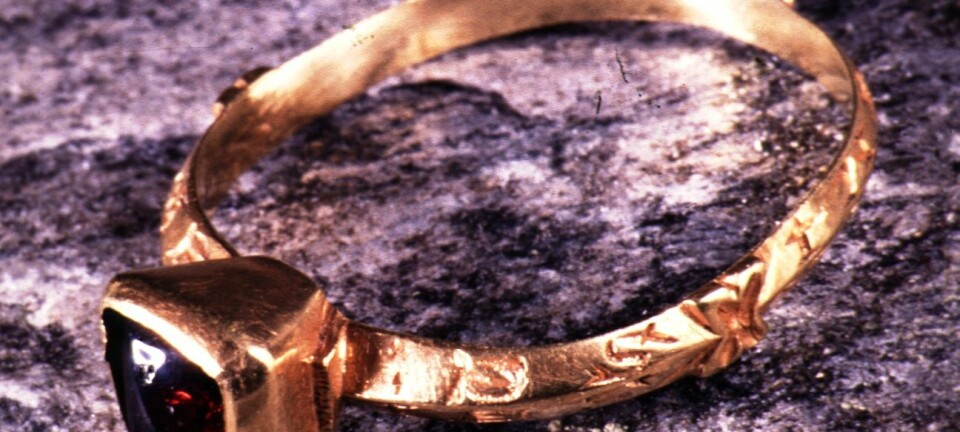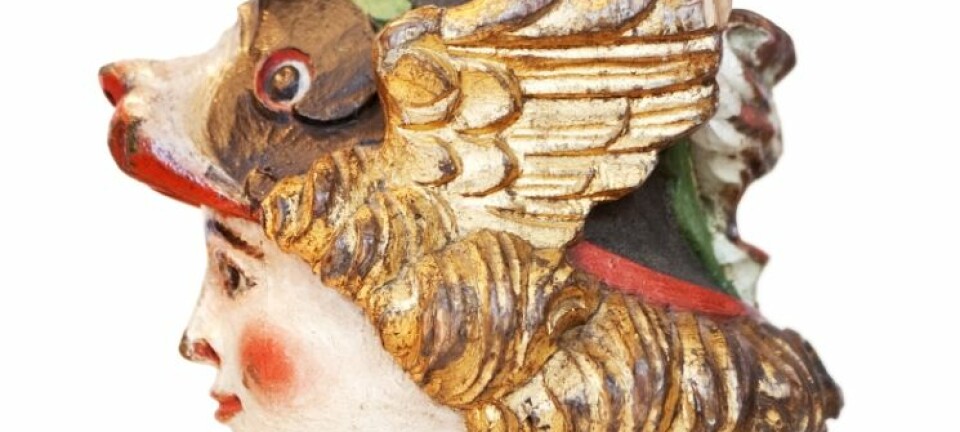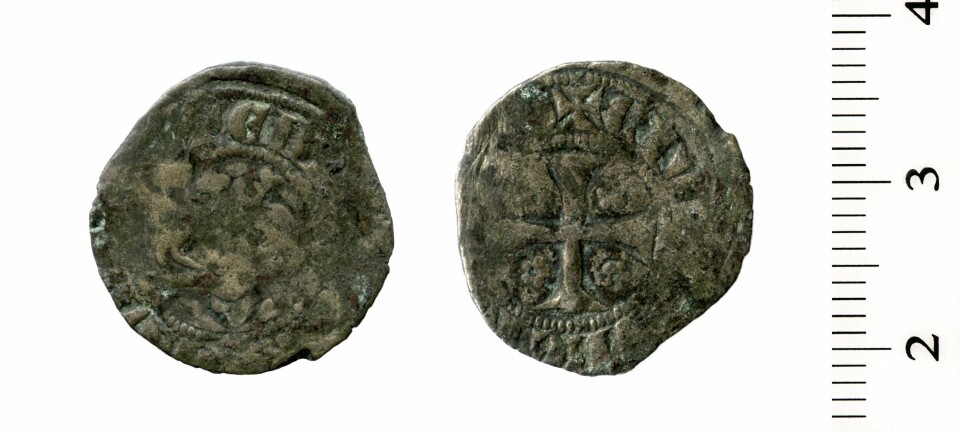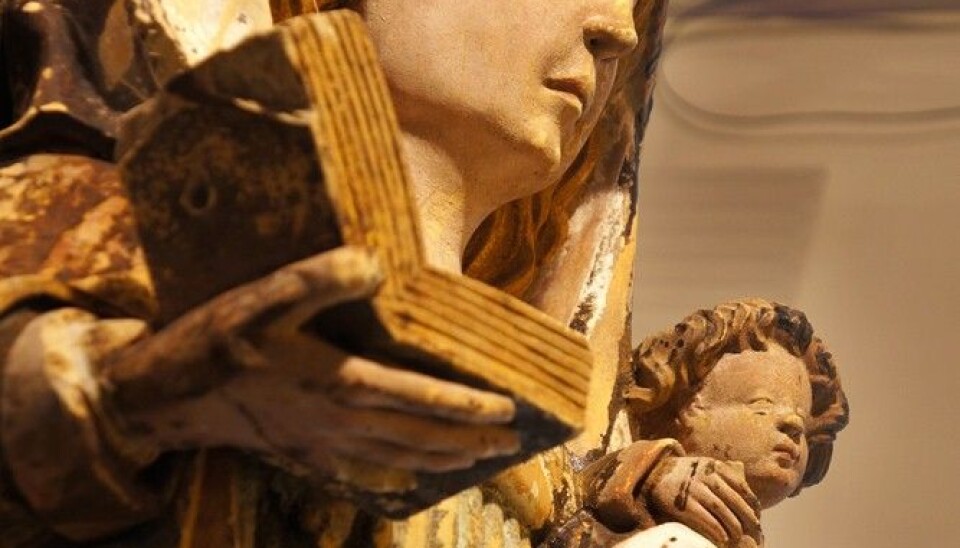
The mysterious stone Madonna of the North
Saved from mould and darkness, she’s a source of mysteries – Norway’s one and only painted stone Madonna from the Middle Ages.
Denne artikkelen er over ti år gammel og kan inneholde utdatert informasjon.
Halogen lamps cast distinct shadows in fragile sandstone.
The graceful face of Maria looks like a death mask beneath the hard lighting of the restoration room of the Norwegian Institute of Cultural Heritage Research (NIKU).
Stone and paint is now getting a new lease on life. Patient hands work with a scalpel, cotton and brushes, removing grime while gluing on detached flakes of paint.
Preservation
Mould has been eating away at this sculpture for centuries and loosening and fading the paint.
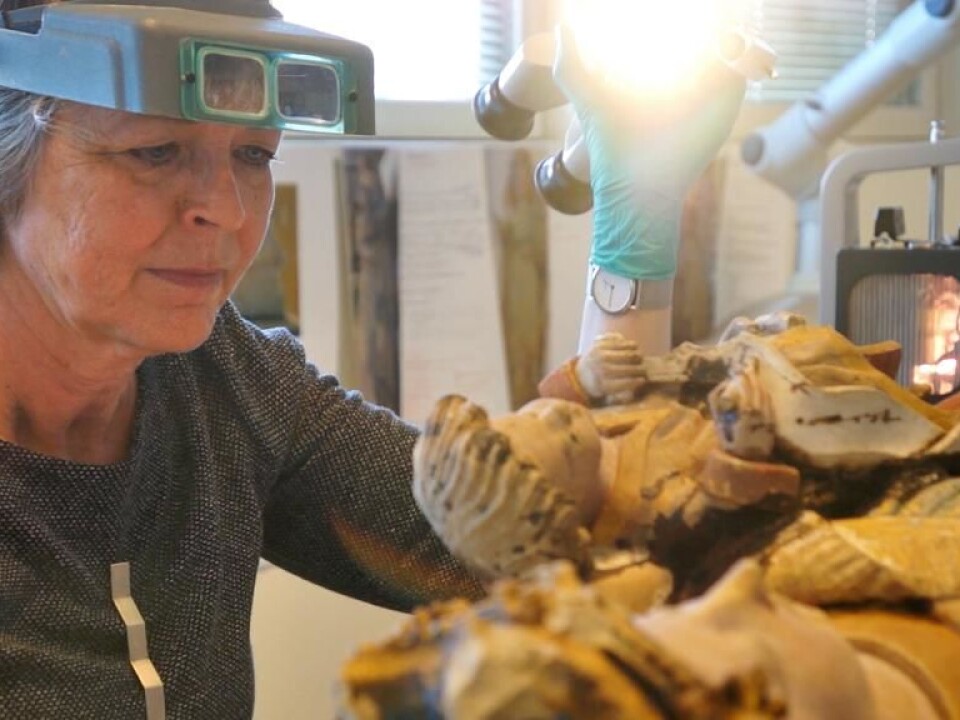
The curators have just a few months to save the remains, because the sculpture is going back to Holdhus Church in western Norway.
Mille Stein, a painting restorer and researcher, says that the paint is from the Middle Ages.
Although the paint has lost its original hue and the gold no longer shines like new, they would rather conserve the sculpture as it is rather than restore it to its original look.
The sculpture, which dates back to the 1450s, glowed of gold, blue, deep green and red when it was new.
Special and rare
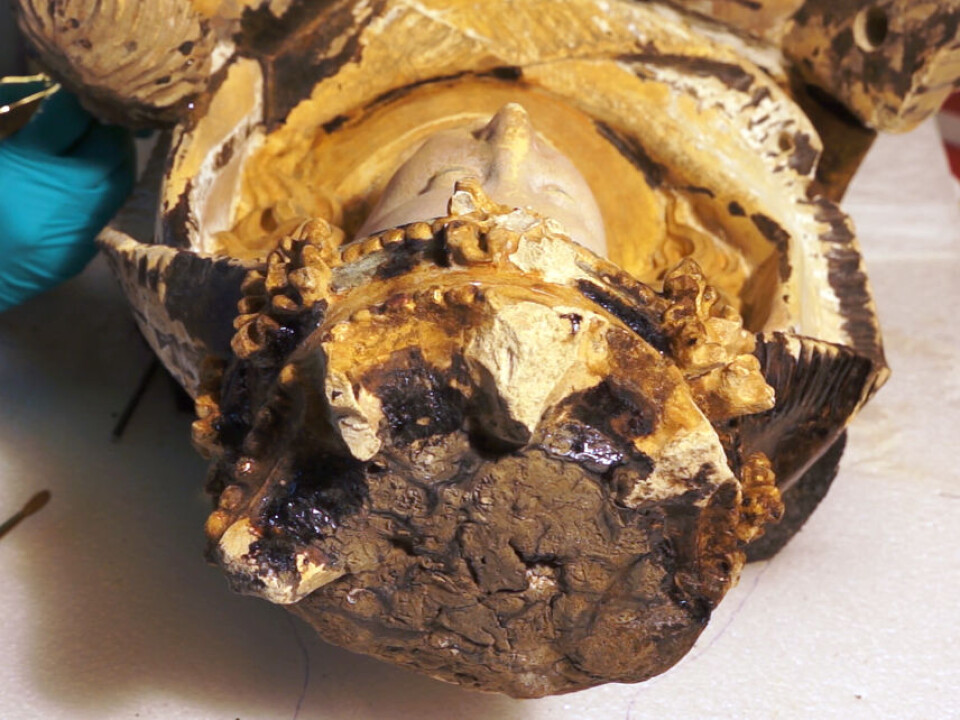
The Holdhus Madonna is the only medieval painted stone sculpture in Norway, which has a lengthy church history. The dainty female figure holds the Christ Child in her left arm.
“The Child has just finished writing the letter ʽJ’ on a scroll. Sculptures with a writing baby Jesus are very rare,” says Stein. She can’t recall seeing any others in the country.
Mary is holding an open book in her right hand. But she is also holding on to some secrets that scientists haven’t been able to decipher.
Fine details in soft rock
Geologists have said this chalky sandstone is not found in Norway. Art historians believe it is from Germany, France or the Netherlands.
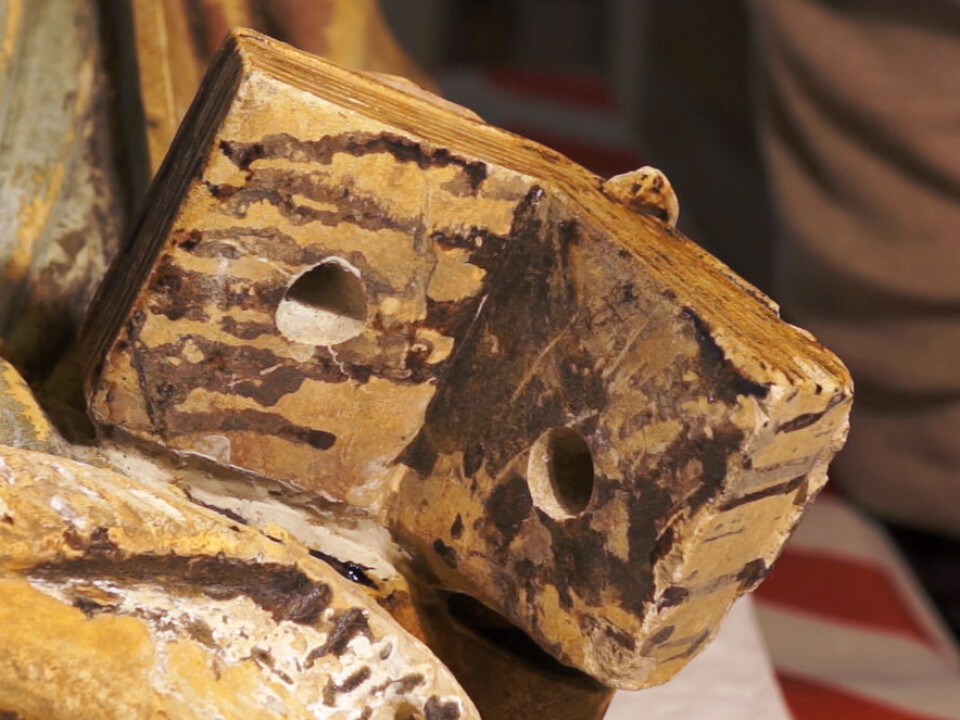
The soft sandstone has provided opportunities that cannot be found in hard Norwegian granite.
“It must have been a joy for the sculptor to fashion these fine details in the crown and the belt,” says the researcher. “Tiny flowers have been conjured out of the rock. This was meticulous work because the rock is fragile and cracks easily.”
An injured hand and broken spikes on Mary’s crown testify to that. Medieval Madonna statues could have very tall crowns.
Stein explains that it can be seen through a microscope that the beads in the crown are covered in gold, with a red glaze, as a translucent layer of paint.
Tar that flowed sideways?

The statue contains another mystery: dried tar from crown to foot.
According to Stein, at some point in time a large amount of tar must have flowed down the statue, and they can trace its path all the way down to the foot.
Scientists think this comes from the routine tarring of a stave church where the figure was once placed. The tar probably dripped from the ceiling onto the sculpture.
“But the weird thing is the way the tar ran down the book Mary is holding in her right hand. The streams run across the book, rather than in a natural vertical direction,” says Stein.
Uncovering more mysteries
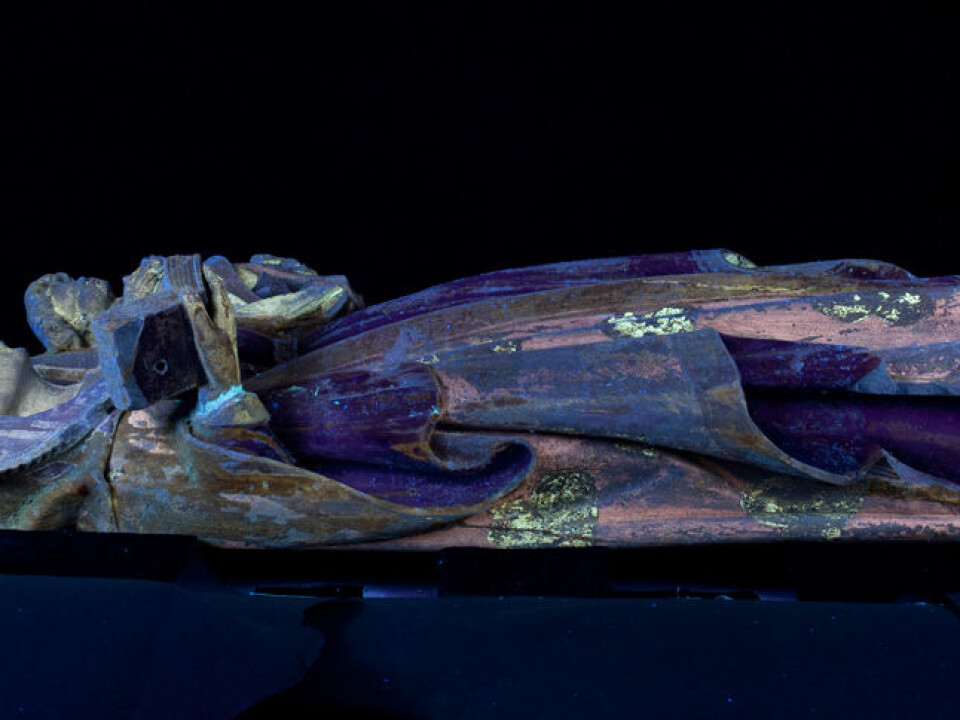
A cone-shaped hole has been drilled on the side of the book Mary is holding. This was made after the sculpture was created.
“The book is opened at an angle, so this couldn’t be a hole made for candles, as the candles would cross each other,” she says.
Lots of people have taken a stab at finding a credible explanation for the holes. Some point out that the hand holding the book has been broken.
Ropes and strings could have been threaded through the holes in the book and other holes further up to keep the hand up before it was glued on.
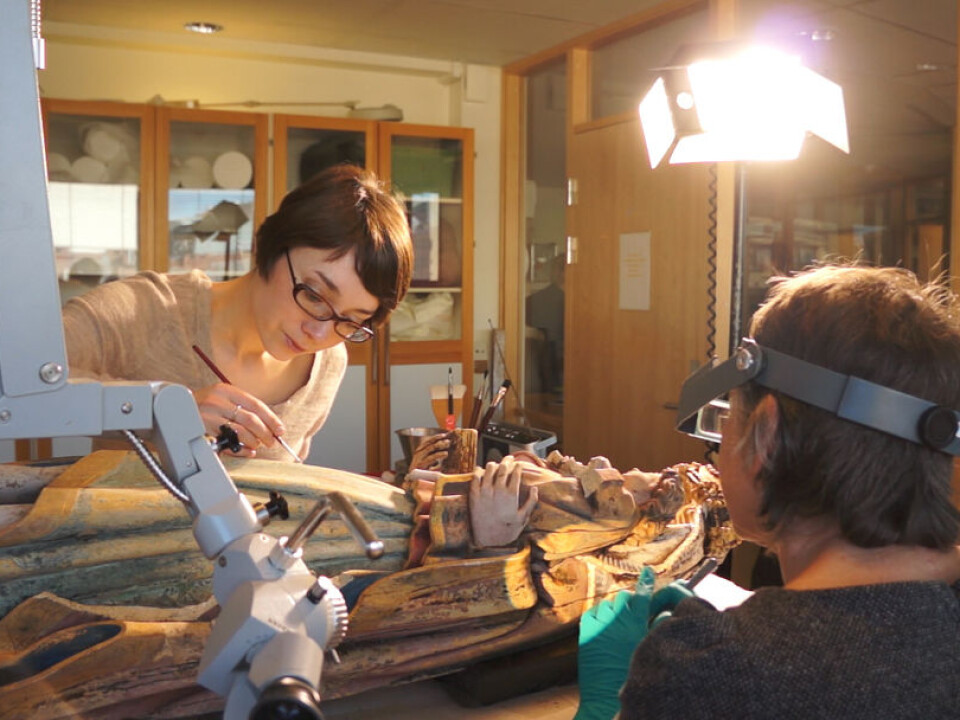
But Stein thinks this is not a good explanation because if this is the reason for making the holes, the holes should be smaller.
Another mystery is concealed underneath the feet of the statue – strange marks under the plinth.
A German curator thought this could be the signature of the stonecutter. But researchers haven’t been able to decipher the signature and determine who the artisan was.
UV light and 3D scanning
Even though Stein and her colleagues will not be painting over the faded colours from the Middle Ages, they envision another way of recreating the Holdhus Madonna as she looked over 550 years ago.
“We want to scan the entire sculpture in three dimensions,” explains Stein.
A 3D model could be completely restored and painted digitally.
---------------------------------------
Read this article in Norwegian at forskning.no
Translated by: Glenn Ostling







